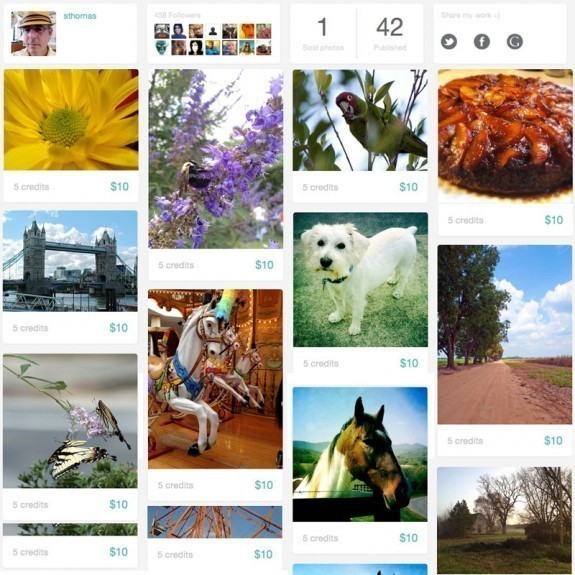 The vision behind Foap is to become a leader in the area of marketing smartphone photos. The concept is basic – with all the talented people around the world walking around with a camera in their pocket, the number of quality photos is staggering. What is needed is a marketplace to bring those photos and potential buyers together in a simple way. The best part of this from the perspective of the photographer is that someone else is taking care of all the paperwork, namely, the folks at Foap.
The vision behind Foap is to become a leader in the area of marketing smartphone photos. The concept is basic – with all the talented people around the world walking around with a camera in their pocket, the number of quality photos is staggering. What is needed is a marketplace to bring those photos and potential buyers together in a simple way. The best part of this from the perspective of the photographer is that someone else is taking care of all the paperwork, namely, the folks at Foap.
There’s a lot more after the jump. >>>
There are now a couple of dozen articles describing the Foap app and the Foap Market, so I’m not going to repeat all that – look them up and read a few, starting with Marty Yawnick’s here on Life in Lofi.
Back in April I happened upon some folks from Sweden looking for a few beta-testers for an upcoming iPhone app called Foap. Let me say that my interactions with Alexandra Byland and David Los were very friendly and open. I had questions, they had questions, and the response between messages was extremely timely. I appreciated the opportunity to test the app, as I had never done it before and as far as I could tell all other testers were in Sweden. I like the people behind Foap and believe that they have thought out the processes and are dedicated to making the Foap Market work for the benefit of both the photographers and the buyers.
That said there are some things to consider. With the worldwide release of Foap, there are now a lot of photos being uploaded. This means that competition for sales is huge. Buyers will have a time going through this massive amount of images. On the positive side, Foap has hired a large crew to review images for quality and usability. By having people tag their photos, searching for particular images is easier for the buyer. On the negative side, that’s a lot of images to look through.
For the seller, I recommend reading the fine print. Most companies use a standard legality when dealing with online image uploading. Foap uses this, too. As far as I can tell, any images uploaded are usable by Foap for placement in the Foap Market, for advertising, and for any other use the company can think of. Once a buyer purchases the image, they have the right to modify, reproduce, publish and sublicense it. Forever.
This is not necessarily a bad thing for photographers. I have taken many, many photos and I really don’t mind making money from the bulk of them. I have also taken a few photos that are extra special and possibly worth more to me by going through a professional image traders in order to get top dollar. So pick and choose carefully what you want to upload, because once you do its not really yours anymore.
Try to upload images that someone would want to buy. Look at your choices from the viewpoint of the buyer. There will be thousands of images that are alike. Yours will need to have something extra to get a buyer to choose it. I suggest that you upload raw images: don’t use filters except to fix colors; allow for the buyer to crop the image; having people in the image is a high priority feature so make sure that you have model releases if necessary; more tags on the image will make searching easier for potential buyers.
In this initial stage of development, Foap is selling images for $10 and splitting 50/50 with the photographer, so you are only getting $5 a sale. Once the Foap Market gets up and running, the purchase price will increase. There are also calls for specific photos from buyers, with a time period for uploading images for the buyer to pick from.
I’ll continue to upload images to Foap. I’d like to see the company become a successful player in the world of stock photo markets for mobile photography.
=S=
~~~~



